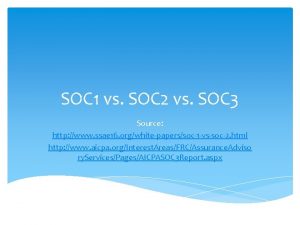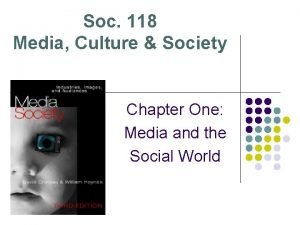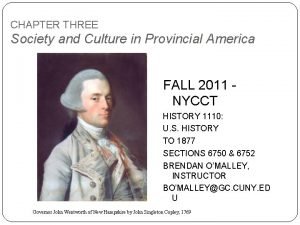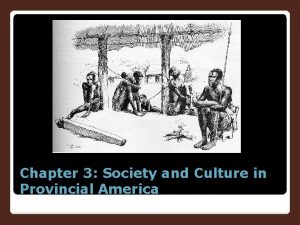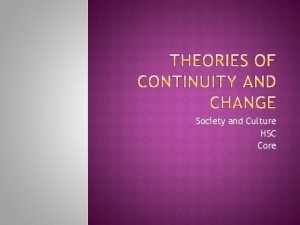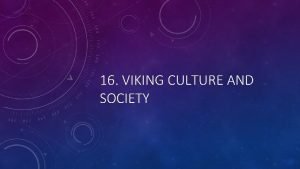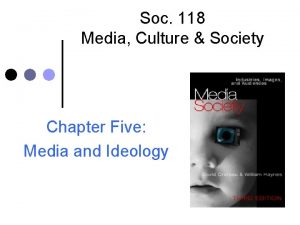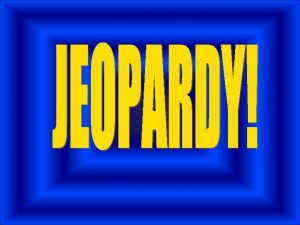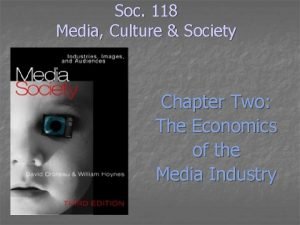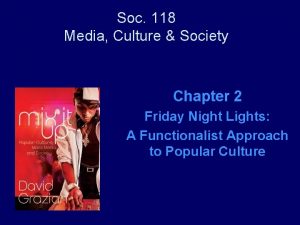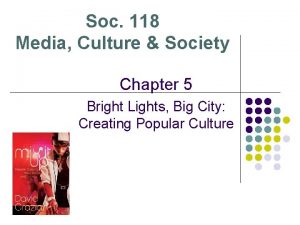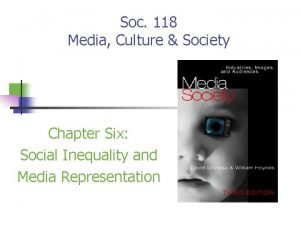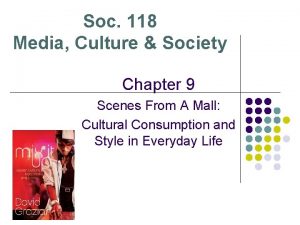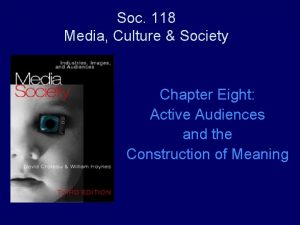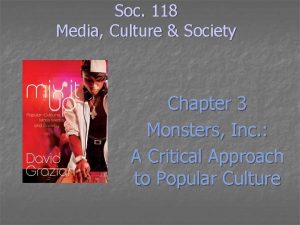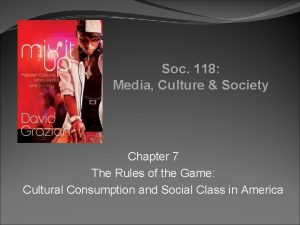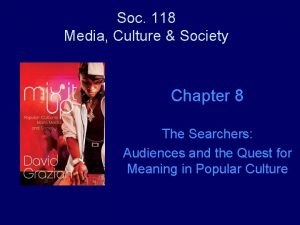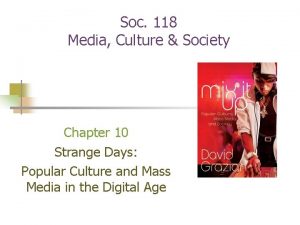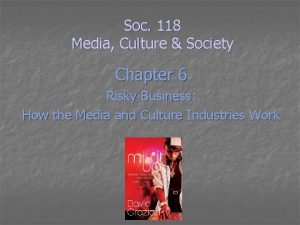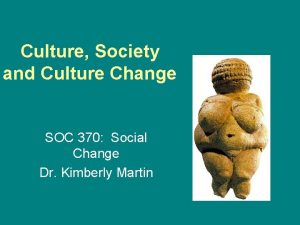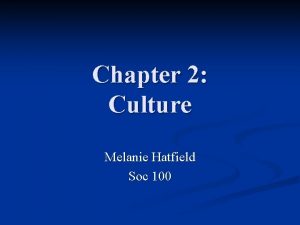Soc 118 Media Culture Society Chapter One Media






















- Slides: 22

Soc. 118 Media, Culture & Society Chapter One: Media and the Social World

OVERVIEW The Importance of Media l The Rise of Media l l l Sociology of the Media l l Timeline of the History of Media The Sociological Perspective Socialization Structure and Agency Social Relations and the Media l Video: “Consuming Images”

The Importance of Media l Consider media usage in the U. S. l l Approximately 7 hrs. /day of leisure time l l 4½ hrs. spent with media Imagine life without media l l l “multitasking”—using more than one form of media at a time Impact on personal lives and social institutions Taking a media “blackout” Difficult to overestimate the importance of media in modern life

Multitasking

The Rise of Mass Media l l l Reader l l Media messages or products Could be print or image or sound The “social construction of reality” l l l Term used instead of “receiver” or “audience” Reading messages implies active interpretation “Texts” l l Plural form of medium (meaning “middle”) Mediates communication (messages) between sender and “receiver” We must negotiate the meaning of reality Example of tattoos Different readers will make different interpretations about meaning of texts

What is the Mass Media? l Mass —vs. — Interpersonal Communication l Mass media l l Personal communication (mail, phone) l l Single, intended known recipient and sender Forms of Mass Media l l Print Sound recording Film Broadcast (radio, TV) l l Radical change in the mode of distribution Internet l l Reaches relatively large audience of anonymous readers Digitization “Old Media”—vs. —“New Media” l l l Blurring the lines between mass and personal Interactive Narrowcasting

Timeline of the History of Media Available at: www. cedmagic. com/history





75% of Americans have Internet access l Access by age and gender: l 77. 6% of kids 2 to 17 75. 0% of young adults 18 to 24 75. 6% of men 25 to 34 77. 0% of women 25 to 34 80. 2% of men 35 to 54 81. 7% of women 35 to 54 l 63. 4% of people 55 and older l l l





Sociology of the Media l Social Revolutions l l l The agricultural revolution l Invention: domestication of plants and animals The industrial revolution l Invention: steam engine The information revolution l Invention: computer microchip

Sociology of the Media l The Sociological Perspective l Culture Shock l The impact of a new place on outsiders or foreigners • l We are like “fish in water” • l Make the familiar strange How to see the world in which we are immersed The Sociological Imagination l To see the connections between “private troubles” and “public issues” • • Understand the role of media in individual lives by placing them in larger social context Links the “micro” and “macro” levels

Sociology of the Media l The process of socialization: l Learn and internalize the values and norms of our culture l l l Continues through life course l l l Values: ideas about good and bad, right and wrong Norms: the expectations for behavior based on values Especially influential in youth Develop identity through “looking-glass self” l Imagining how others see us Agents of socialization l l l Family School Peers Media plays a role in socializing us into our culture

Sociology of the Media l Structural Constraint and Human Agency l Structure l l Agency l l Describes recurring patterns of social behavior (social structure) Exerts constraint on action Limits agency Indicates independent action Intelligent, capable, creative behavior Reproduces and maintains social structure • Potential to create social change Examples: l l Family Education

Social Relations and the Media l The media in the process of social relations l l Mediating our relationships with various social institutions Mass media and social relations l Relationships between institutions (Ch. 2, 3, 7) l l l Relationships within an institution (Ch. 4) l l l How does the economy and politics affect the media industry? How does the media affect those and other social institutions? How does the structure of the media industry affect media personnel? How do industry personnel affect media products? Relationships between institutions and individuals (Ch. 8) l l How does the media affect readers? How do readers interpret and use media?

Video Presentation “The Public Mind: Consuming Images”
 Soc 3 vs soc 2
Soc 3 vs soc 2 118 media
118 media Society and culture in provincial america
Society and culture in provincial america Chapter 3 society and culture in provincial america
Chapter 3 society and culture in provincial america Gertler econ
Gertler econ One god one empire one emperor
One god one empire one emperor One one one little puppy run
One one one little puppy run One king one law one faith
One king one law one faith One empire one god one emperor
One empire one god one emperor One ford
One ford See one do one teach one
See one do one teach one See one, do one, teach one
See one, do one, teach one Night structure
Night structure See one do one teach one
See one do one teach one Asean tourism strategic plan
Asean tourism strategic plan Asean one vision one identity one community
Asean one vision one identity one community Society and culture hsc
Society and culture hsc Hsc society and culture
Hsc society and culture Example of introduction for project
Example of introduction for project Culture that generally pursued by the upper class
Culture that generally pursued by the upper class Viking hierarchy
Viking hierarchy Southern colonies society/culture
Southern colonies society/culture Vce chinese language culture and society
Vce chinese language culture and society
